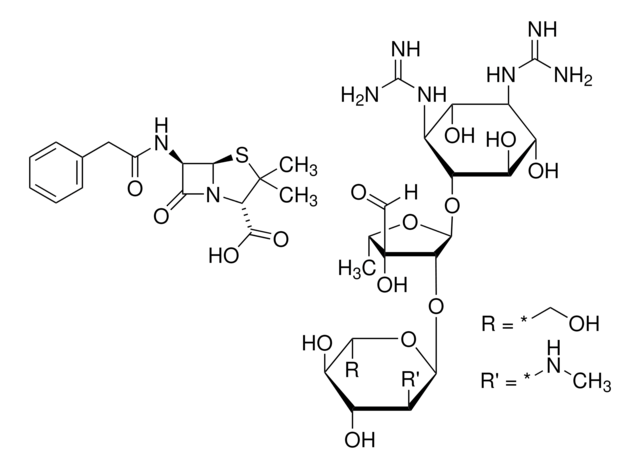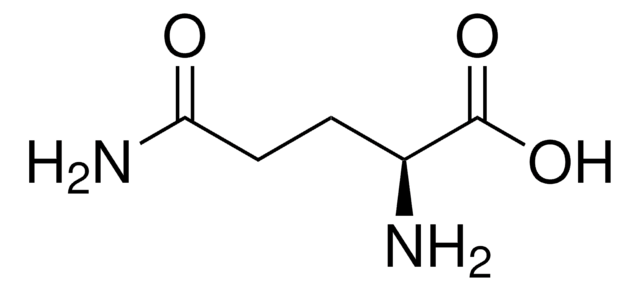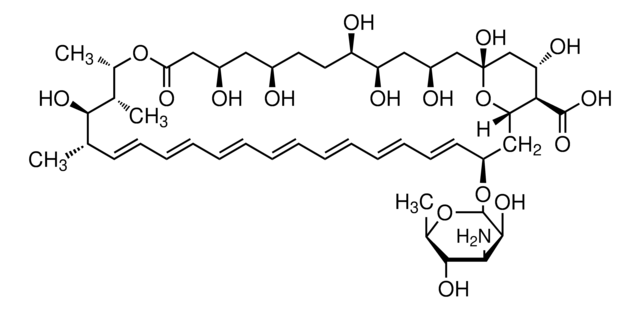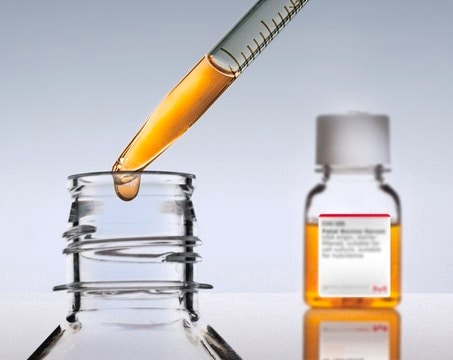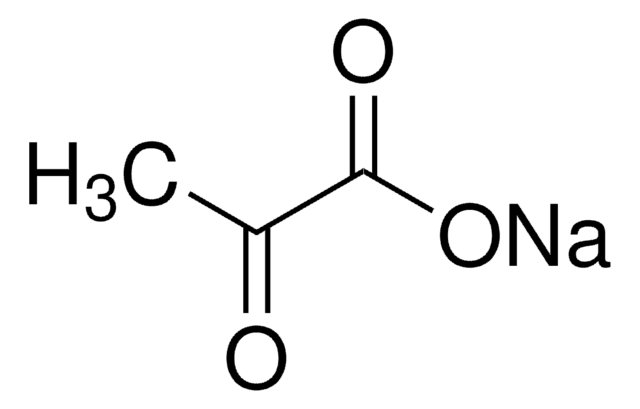P4333
Penicillin-Streptomycin
Solution stabilized, with 10,000 units penicillin and 10 mg streptomycin/mL, 0.1 μm filtered, BioReagent, suitable for cell culture
Recommended Products
Quality Level
sterility
0.1 μm filtered
product line
BioReagent
form
liquid
concentration
100 ×
technique(s)
cell culture | mammalian: suitable
impurities
endotoxin, tested
antibiotic activity spectrum
Gram-negative bacteria
Gram-positive bacteria
Mode of action
cell wall synthesis | interferes
protein synthesis | interferes
shipped in
dry ice
storage temp.
−20°C
SMILES string
CC1(C)S[C@@H]2[C@H](NC(=O)Cc3ccccc3)C(=O)N2[C@H]1C(O)=O.CNC[C@H]4[C@H](O)[C@@H](O)[C@H](CCO)O[C@H]4O[C@H]5[C@@H](O[C@@H](C)C5(O)C=O)O[C@H]6[C@H](O)[C@@H](O)[C@H](NC(N)=N)[C@@H](O)[C@@H]6NC(N)=N
InChI
1S/C23H43N7O12.C16H18N2O4S/c1-7-23(38,6-32)18(42-19-8(5-28-2)12(33)13(34)9(40-19)3-4-31)20(39-7)41-17-11(30-22(26)27)14(35)10(29-21(24)25)15(36)16(17)37;1-16(2)12(15(21)22)18-13(20)11(14(18)23-16)17-10(19)8-9-6-4-3-5-7-9/h6-20,28,31,33-38H,3-5H2,1-2H3,(H4,24,25,29)(H4,26,27,30);3-7,11-12,14H,8H2,1-2H3,(H,17,19)(H,21,22)/t7-,8-,9-,10+,11-,12-,13-,14+,15-,16+,17+,18-,19-,20-,23+;11-,12+,14-/m01/s1
InChI key
KMOOCZWLFBSQCW-XFOLRDBHSA-N
Looking for similar products? Visit Product Comparison Guide
Related Categories
General description
Application
Penicillin streptomycin solution has been used as a supplement in different types of media, including RGC (retinal ganglion cells) culture, α-MEM (minimum essential medium) growth medium, Dulbecco′s modified Eagle′s medium (DMEM)/nutrient mixture F-12 Ham, DMEM and DMEM/F-12 + GlutaMax.
Components
Other Notes
recommended
Storage Class Code
12 - Non Combustible Liquids
WGK
WGK 2
Flash Point(F)
Not applicable
Flash Point(C)
Not applicable
Certificates of Analysis (COA)
Search for Certificates of Analysis (COA) by entering the products Lot/Batch Number. Lot and Batch Numbers can be found on a product’s label following the words ‘Lot’ or ‘Batch’.
Already Own This Product?
Documents related to the products that you have purchased in the past have been gathered in the Document Library for your convenience.
Difficulty Finding Your Product Or Lot/Batch Number?
How to Find the Product Number
Product numbers are combined with Pack Sizes/Quantity when displayed on the website (example: T1503-25G). Please make sure you enter ONLY the product number in the Product Number field (example: T1503).
Example:
Additional examples:
705578-5MG-PW
PL860-CGA/SHF-1EA
MMYOMAG-74K-13
1000309185
enter as 1.000309185)
Having trouble? Feel free to contact Technical Service for assistance.
How to Find a Lot/Batch Number for COA
Lot and Batch Numbers can be found on a product's label following the words 'Lot' or 'Batch'.
Aldrich Products
For a lot number such as TO09019TO, enter it as 09019TO (without the first two letters 'TO').
For a lot number with a filling-code such as 05427ES-021, enter it as 05427ES (without the filling-code '-021').
For a lot number with a filling-code such as STBB0728K9, enter it as STBB0728 without the filling-code 'K9'.
Not Finding What You Are Looking For?
In some cases, a COA may not be available online. If your search was unable to find the COA you can request one.
Articles
rganoid culture products to generate tissue and stem cell derived 3D brain, intestinal, gut, lung and cancer tumor organoid models.
Protocols
Detailed procedure for how to perform a lentiviral transduction of MISSION shRNA lentiviral particles to achieve a stable long term silencing and phenotypic change.
Stem cell reprogramming protocols to generate human induced pluripotent stem cells (iPSCs) including viral and non-viral RNA based methods.
Our team of scientists has experience in all areas of research including Life Science, Material Science, Chemical Synthesis, Chromatography, Analytical and many others.
Contact Technical Service